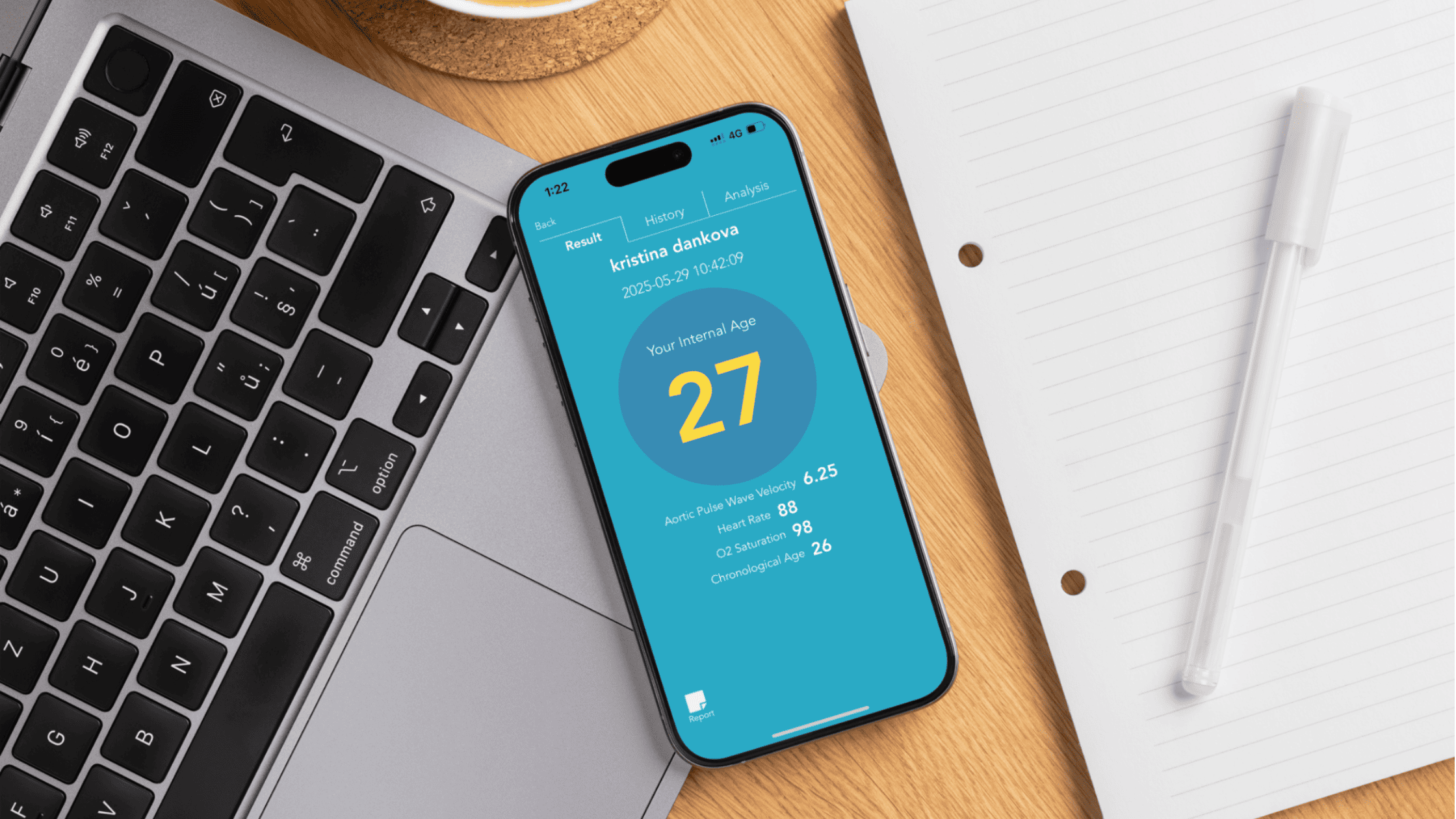We have some exciting news for you. Now more than ever, achieving optimal wellness, staying young, and feeling your best is simple and easy. At iHeart, we are bridging ancient Eastern wisdom with modern Western scientific knowledge, allowing you to quantify the benefits of movement arts like Yoga, a healthy diet, and stress management. And the secret—youthful Inner Mobility. Without further ado, let's dive in.
In this post, we'll explore:
- The relationship between Inner Mobility and spinal flexibility
- The impact of spine flexibility on your overall health and wellness
- How to improve spinal flexibility
- How iHeart can help you.
The Relationship Between Inner Mobility And Spinal Flexibility.
Connections between the spine, rib cage, diaphragm muscle, skull, pelvis, and other core structures and tissues create a linked mobility termed Inner Mobility. By improving Inner Mobility, each breath acts as an engine of health, fueling optimal wellness and longevity.
Now, one cannot talk of Inner Mobility without mentioning spinal flexibility; they go hand in hand. Spinal flexibility is a surrogate measure of inner Mobility, meaning the more flexible your spine, the greater your Inner Mobility. Why is this? Let's break it down further.
The spine is the body's central support structure connecting the four main cavities—cranial, thoracic, abdominal, and pelvic, which enclose the body's organs, such as the brain, heart, lungs, digestive organs, etc. These organs are essential for maintaining health, preventing illness, and determining lifespan. As a flexible spine coils and straightens freely, it activates and enhances the function of these cavities and the organs within.
Additionally, elastic connections between the spine, rib cage, and diaphragm enable breathing to act as the engine of life.

Why Spinal Flexibility Matters To Your Health
1. Spinal Flexibility and Organ Function
The spine's flexibility has a great impact on various organ systems. For instance, when the diaphragm moves freely with each breath (due to a mobilized spine), it aids in the compression and release of the liver, spleen, and kidneys, thereby facilitating improved blood flow and organ health. On the other hand, restricted spinal movement can lead to decreased organ function, impacting our overall health and well-being.
Furthermore, spinal flexibility significantly influences the flow of cerebrospinal fluid (CSF), which nourishes the brain and spinal cord. Efficient breathing patterns help pump CSF throughout the central nervous system, ensuring that your brain receives the necessary nutrients and maintains balanced immune function. That said, enhancing spinal flexibility can boost brain function and prevent cognitive decline.
2. Spinal Flexibility and the Autonomic Nervous System
The autonomic nervous system (ANS) regulates involuntary bodily functions, including heart rate, digestion, and respiratory rate. Research has shown that spinal flexibility is really important for maintaining the balance between the sympathetic and parasympathetic branches of the ANS. This balance is necessary because it manages stress responses and promotes relaxation, which is great for living healthier and calmer.
3. Spinal Flexibility and Aortic Stiffness
Interestingly, the aorta's stiffness, the body's largest blood vessel, is closely linked to spinal flexibility. Research suggests that increased aortic stiffness may serve as an indicator of decreased spinal flexibility. In this light, a more flexible spine means lower aortic stiffness, which can reduce the risk of cardiovascular issues, such as hypertension and heart disease.
Some Benefits of Improved Spine Flexibility
Keeping your spine flexible enhances inner Mobility, helping you achieve optimal well-being and longevity. When you improve spine flexibility, you also:
- Improve Circulation: A flexible spine supports proper blood flow, helping deliver oxygen and nutrients to all body parts.
- Improved Organ Function: Spinal flexibility allows your diaphragm to move freely, aiding in the healthy functioning of your internal organs, including the heart, liver, and kidneys.
- Enhanced Brain Health: Spinal flexibility supports the exchange of cerebrospinal fluid, helping clear out waste from the brain and protect against cognitive decline.
- Longevity: A flexible spine keeps internal systems running efficiently, reducing your risk of cardiovascular disease and cognitive decline, which are tied to how well your body can move and breathe.
How To Improve Spinal Flexibility
Fitness training is an art that restores and maintains inner Mobility. Regular fitness training, spine mobility exercises, or movement arts like Tai Chi and Yoga improve the movement of the spine and rib cage to allow full diaphragmatic travel, which will improve internal organ function and overall health.
Examples of Spine Mobility Exercises
- Cat-cow stretch
- Child's pose
- Cobra pose
- Thread in The Needle
- Seated spinal twist
How iHeart Can Help (Spinal Flexibility Test)
For the first time, there is an easy-to-understand approach to optimizing Inner Mobility and achieving optimal wellness and longevity. Here's how the iHeart system works:

With iHeart, you can objectively test your spine flexibility—no one else offers this. The iHeart internal age app easily measures Aortic Stiffness, indicating spinal flexibility and inner Mobility.

In addition, the iHeart system has other tools, like iHeart Brain, which checks how your blood pressure recovers when you stand up, showing how well your nervous system is working.

It also offers iHeart HRV to monitor your heart rate variability, giving insights into how your nervous system is balanced.

Suppose you want to track your breathing and heart rate changes. In that case, iHeart Record can do that for you, with options to measure over different periods (1, 3, 5, or 10 minutes).

Finally, iHeart Remote allows a fitness trainer or health professional to connect with you and monitor your heart rate and oxygen levels in real time, no matter where you are.
Closing Thoughts
Spinal flexibility is a surrogate measure of inner Mobility, which is the ancient Eastern secret to achieving optimal wellness and longevity. By improving this through fitness training or movement arts like Yoga and tai chi, we can stay young and feel our best. This ancient secret has transcended several generations, and now you can fully experience it easily and objectively with iHeart.
References
1. Arterial stiffness as a cause of cognitive decline and dementia: a systematic review and meta-analysis2. Changes in spinal Mobility with increasing age in women
3. Cerebrospinal fluid stasis and its clinical significance.






Share:
The Power of Inner Mobility: The Ancient Secret to Staying Young
How to Use the iHeart System to Track Your Health at Home
1 comment
Great info! Going to try to make those stretches a daily habit….